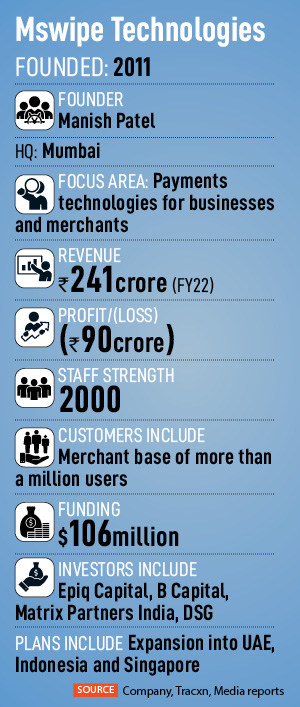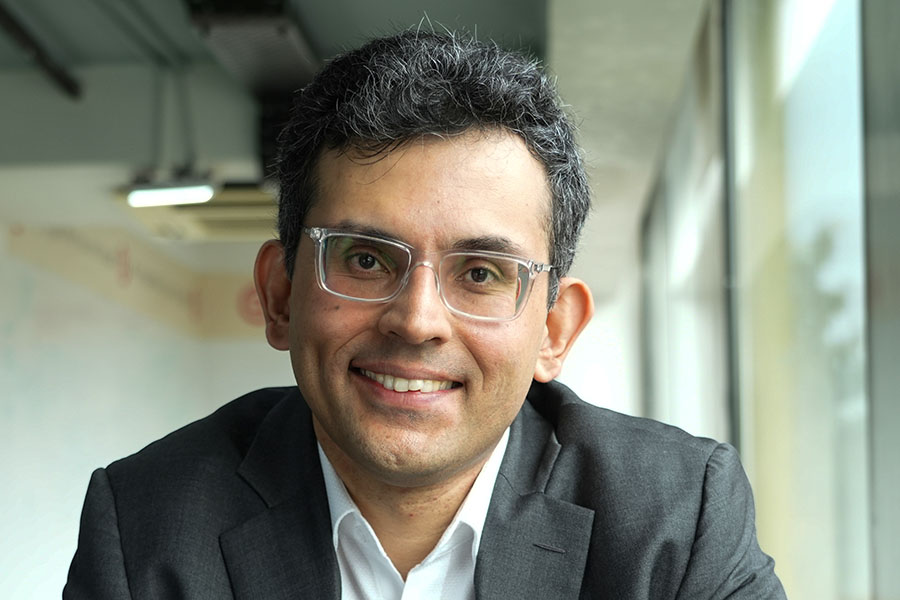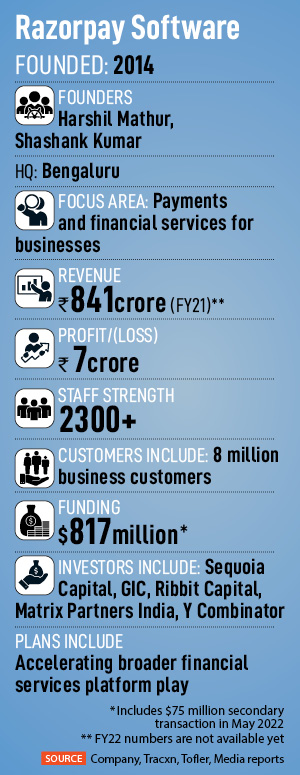 Digital funds, the most important fintech phase proper now, will proceed to see the robust development of latest years, touching an estimated $153 billion in transaction worth in 2023, in contrast with $133 billion in 2022, in line with knowledge from Statista
Digital funds, the most important fintech phase proper now, will proceed to see the robust development of latest years, touching an estimated $153 billion in transaction worth in 2023, in contrast with $133 billion in 2022, in line with knowledge from Statista
Picture: Picture Illustration by Rafael Henrique/SOPA Pictures/LightRocket by way of Getty Pictures
As India’s innovation-with-regulation experiment in fintech enters 2023, we’re more likely to see firms emerge that can change how we see numerous elements of finance—from loans for small purchases to monetary software program for giant companies. Rising new fashions will possible see traction on the again of the exceptional public-private infrastructure that’s evolving in monetary providers, but in addition within the broader space of all digital providers.
Digital funds, the most important fintech phase, will proceed to see the robust development of latest years, touching an estimated $153 billion in transaction worth in 2023, in contrast with $133 billion in 2022, in line with knowledge from Statista. Neo banking, which usually refers to fintech ventures that provide banking services and products in partnership with regulated entities, and may also embody trendy digital banking, will contact $65 billion in transaction worth this 12 months, versus $47 billion final 12 months.
One factor about India’s fintech ecosystem is that regulation is hanging a tremendous steadiness between innovation and safety, says Avinash Godkhindi, co-founder and CEO of Zaggle, which presents expense administration software program to enterprise clients. The one-time password on the mobile phone for numerous transactions is an easy, however nice instance of that, he says. The underside line is, “individuals ought to be capable to belief your platform,” he factors out, and if the innovation-with-regulation strategy continues to make sure that, giant international fintech firms might emerge from India.
For now, listed below are 5 firms to observe in 2023, as they search their subsequent section of development.
Mswipe: Taking a swipe at enlargement
 Ketan Patel, cofounder, Mswipe Applied sciences
Ketan Patel, cofounder, Mswipe Applied sciences
 Mswipe Applied sciences was began greater than 11 years in the past, and over the course of time, “we have seen all the things, survived all the things, and tried to grasp no matter we might,” CEO Ketan Patel advised Forbes India in July 2022. On the time, the corporate, well-known for its point-of-sale terminals, had round half one million retailers utilizing them, Patel stated. From 2017-18 Mswipe has focussed on QR code-based funds, with one million retailers utilizing its QR codes, he stated. Extra not too long ago, it introduced its personal soundbox, the Mswipe Boombox, to the market with which retailers can get sound and show notifications for funds. Mswipe additionally has an NBFC allow and has been increasing its lending enterprise during the last 12 months or so.
Mswipe Applied sciences was began greater than 11 years in the past, and over the course of time, “we have seen all the things, survived all the things, and tried to grasp no matter we might,” CEO Ketan Patel advised Forbes India in July 2022. On the time, the corporate, well-known for its point-of-sale terminals, had round half one million retailers utilizing them, Patel stated. From 2017-18 Mswipe has focussed on QR code-based funds, with one million retailers utilizing its QR codes, he stated. Extra not too long ago, it introduced its personal soundbox, the Mswipe Boombox, to the market with which retailers can get sound and show notifications for funds. Mswipe additionally has an NBFC allow and has been increasing its lending enterprise during the last 12 months or so.
This 12 months it goals to extend income by 70 % and turn into worthwhile, each on the funds aspect and the lending enterprise, Patel stated. In August, Mswipe acquired an in-principal nod from the Reserve Financial institution of India for its funds aggregator software, CFO Rohit Agrawal advised the media in October. This allow will assist the corporate turn into an even bigger on-line funds operator for its service provider base.
Mswipe sees funds quantity of about $3 billion on an annualised foundation, in line with Agrawal, who can also be CEO of MCapital, the NBFC enterprise of Mswipe. Total, he expects the corporate to be worthwhile within the fourth quarter of the present fiscal or the primary quarter of the 12 months beginning April 2023, in line with media studies.
From an innovation perspective, two initiatives by Mswipe are noteworthy. First, with respect to buy-now-pay-later (BNPL), Mswipe has taken the strategy of making a platform 0that will assist retailers provide it to customers. Mswipe itself has stayed away from making BNPL loans. “Our final intention is that the service provider’s enterprise will increase,” Patel stated. On this context, Mswipe is advertising and marketing an all-in-one cell phone, known as ‘Dukaan ka telephone’, priced at Rs 8,000 that retailers can use to simply accept card funds, generate dynamic QR codes and so forth.
The set off for this concept got here from visiting outlets in smaller cities, the place usually, post-lunch, the store proprietor goes dwelling for a siesta, Patel stated. Throughout that time0 there shall be one different helper within the retailer who usually doesn’t know learn how to settle for QR-code-based funds. This telephone, meant to be at all times saved within the store, will assist, he stated, as it may well “settle for all the things”.
In the long term, Mswipe will evolve right into a digital financial institution focussed on small retailers, Patel stated. From point-of-sale machines to micro-ATMs to BNPL as a platform, “all the things that we’ve been doing is in the direction of that,” he says. At present Mswipe is ready for a company company license, the place it has created a product that can permit retailers to promote insurance coverage insurance policies on PoS terminals.
Finally, Mswipe will search a banking license, he stated.
Additionally learn: Digital funds: The following wave is right here
Axio: Redefining client loans
 Sashank Rishyasringa (left), Gaurav Hinduja cofounders, axio finance
Sashank Rishyasringa (left), Gaurav Hinduja cofounders, axio finance
 Axio’s founders took their time discovering their groove. The Bengaluru firm began with a license to offer loans as a non-banking lender, and the plan was to make use of proprietary algorithms and processes to determine creditworthiness and provides loans painlessly and rapidly.
Axio’s founders took their time discovering their groove. The Bengaluru firm began with a license to offer loans as a non-banking lender, and the plan was to make use of proprietary algorithms and processes to determine creditworthiness and provides loans painlessly and rapidly.
With the rise of ecommerce and cellular data-based web penetration in India, Sashank Rishyasringa and Gaurav Hinduja zeroed in on checkout finance. Their enterprise has greater than 6 million customers taking loans on the level of sale. Tons of of hundreds extra are becoming a member of each month, and Axio expects to finish the present monetary 12 months with 8 million clients. “We’re embedded into a few of the largest ecommerce ecosystems within the nation,” Hinduja says, which has helped Axio purchase clients at a low value.
Axio’s tech and underwriting prowess has developed to the extent the place customers can get a mortgage “in below 3 seconds”, and use the cash for his or her on-line purchases on the level of sale. Axio’s software program engines can provide “100 millisecond response time on Diwali sale day,” Hinduja says.
Whereas the Covid-19 pandemic accelerated the speed at which customers adopted Axio, the lender has additionally been in a position to maintain dangerous loans at lower than 2 % of its portfolio, the duo says. One of many methods is by preserving preliminary loans to new customers low—say Rs 5,000—and rising with them as they show creditworthy. Axio has automated a lot of this, they are saying.
“The large shift has been to go from interested by merchandise as constructing blocks to considering of consumers as constructing blocks,” Rishyasringa provides. “Checkout finance is the start of a relationship; it’s how we purchase clients and the way they uncover us. As soon as the client makes use of us to finance one buy, our aspiration is to develop to satisfy different, bigger, wants as they arrive.”
At this time there are about 130-150 million individuals in India who store on-line. There are, nevertheless, greater than 250 million who use UPI. And the variety of distinctive bank card holders is just at round 30 million. Over the subsequent two or three years, the variety of internet buyers is anticipated to go to 250 million or extra, whereas the variety of distinctive bank card holders is just anticipated to hit 50-60 million. Subsequently, Axio’s founders see a chance to supply their merchandise to that phase of 200 million “digitally energetic” customers who received’t have bank cards however nonetheless want credit score for his or her purchases.
An acquisition that Axio introduced in August 2018 can also be enjoying an essential position in accelerating its client finance enterprise. Axio bought Walnut in a $30 million cash-and-stock deal and since then built-in all the things below the Axio model. Prospects can get loans, but in addition use the options that got here from Walnut, similar to monitoring their spends.
The app offers clients “a 360-degree view” of their funds, which is step one in the direction of monetary literacy, Rishyasringa says. Subsequent, it’s potential to construct options inside the app that assist clients make higher spending selections. For instance, diverting some idle cash into a hard and fast deposit or exhibiting a immediate to make a bank card fee at a time that may save the person cash on curiosity and so forth. A few of these options are already accessible on the Axio app.
One problem in Axio’s sector is that the demand for credit score may be very giant. Any regulation that may make it simpler for the supply-side to increase will assist, Rishyasringa says. In 2023, Axio’s founders anticipate to triple their buyer base.
Lentra: Software program for reworking lending
 Lentra, founder, D Venkatesh
Lentra, founder, D Venkatesh
 D Venkatesh obtained the concept for Lentra as a result of he was already coping with banks as clients in his earlier firm. The primary product he created at Lentra supplied a method for the financial institution or a lender to question a credit score bureau and get a report in an automatic vogue. Inside three years of being based in Pune, Lentra added methods for mortgage origination, mortgage administration, marketing campaign administration, lead qualification, assortment, and studies era.
D Venkatesh obtained the concept for Lentra as a result of he was already coping with banks as clients in his earlier firm. The primary product he created at Lentra supplied a method for the financial institution or a lender to question a credit score bureau and get a report in an automatic vogue. Inside three years of being based in Pune, Lentra added methods for mortgage origination, mortgage administration, marketing campaign administration, lead qualification, assortment, and studies era.
“We obtained the entire 9 yards for lending lined and in a way that the banks can use instantly and in a method that it permits them to return in at a degree that they suppose is beneficial to them and exit at a degree that they suppose is sufficient for them,” Venkatesh says. “It would not pressure the financial institution to make use of any of our modules that they do not wish to use proper now. In the event that they wish to remedy a particular slice of your complete universe, they might try this on the platform. There are not any compulsions that the platform dictates.”
Origination is a sophisticated drawback and it may well by no means hit 100%, Venkatesh says. It’s time-consuming as a result of the financial institution has to pin down the id of debtors, their backgrounds, and “search for any tremors” with respect to their money circulate. Lentra has constructed software program that make a lot of this rule-based and automatic, serving to banks scale up the processing of purposes. It’s work in progress, nevertheless it’s come to a degree the place 95 % of the purposes processed on the platform are processed with no human intervention.
For the remaining 5 %, Lentra has constructed chat and internet-based communication channels in order that the financial institution’s again workplace may even be in smaller cities and cities. The software program additionally presents an increasing product characteristic set: Richer studies, capability to schedule partial mortgage disbursals and collections, and so forth. The banks get monetary savings on getting creditworthy clients, and id fraud is approaching zero, the place Lentra is used, Venkatesh says.
“We have now far exceeded the banks’ expectations on all dimensions,” Venkatesh says. “Folks overlook info safety and the provision angles after they do these sorts of items, however we have excelled on these fronts.” From the time of inception, Lentra has helped banks give out billions of {dollars} in loans. On a typical day, its platform helps course of over 150,000 purposes, Venkatesh says. With the crew of workers anticipated to achieve 800, Lentra has visibility of consumers and orders to $100 million in income in FY24, he says. Past that, the ambition is to get to $250 million revenues in 2026.
The most recent funding spherical, additionally its greatest, of $60 million introduced in November 2022, will assist Lentra increase abroad, beginning with markets like Vietnam, Indonesia and Philippines—out of a base in Singapore—however ultimately the US.
The corporate is rewriting elements of its software program “so it scales to a inhabitants that we assume shall be within the neighbourhood of 12 billion individuals”. If Lentra succeeds on this, then it will likely be in a position to deal with the worldwide load, he says. “We’ll use funds to strengthen the platform feature-wise, performance-wise, and making it a world software program. We must always be capable to implement it in any language in any nation sitting in India.” Lentra can also be taking a look at making some focused acquisitions.
Zaggle: No-hassle expense administration and extra
 Avinash Godkhindi, cofounder, Zaggle Pay as you go Ocean Providers
Avinash Godkhindi, cofounder, Zaggle Pay as you go Ocean Providers
 Zaggle is a B2B2C software-as-a-service fintech firm, providing its tech to enterprise clients who in flip use these options to digitise numerous monetary and associated processes for particular person workers, similar to advantages, rewards and expense administration. The corporate additionally presents channel incentive administration—for companies to cope with their sellers and distributors, for instance—and is increasing strongly into vendor administration.
Zaggle is a B2B2C software-as-a-service fintech firm, providing its tech to enterprise clients who in flip use these options to digitise numerous monetary and associated processes for particular person workers, similar to advantages, rewards and expense administration. The corporate additionally presents channel incentive administration—for companies to cope with their sellers and distributors, for instance—and is increasing strongly into vendor administration.
“Something that’s repetitive, extremely interactive and which culminates in a spend, we are available in there,” says co-founder and CEO Avinash Godkhindi. “We name it spend administration 360.”
The Zaggle of as we speak is the results of a number of modifications, beginning with rewards and recognition in enterprises and shifting to providing software program to handle advantages after which reimbursements, which opened up the expense administration alternative and in flip vendor administration.
Final 12 months the corporate had revenues of about Rs 372 crore, with Ebidta of about Rs 60 crore. “This 12 months we’ll do even higher and the corporate is pretty scaled up,” Godkhindi says. The corporate has been worthwhile for 3 years and its clients embody Infosys, Persistent Programs, Microsoft, and numerous Tata Group firms. Zaggle’s software program options and cellular app is on the market in English, Hindi, Telugu, Tamil and Kannada; Godkhindi expects so as to add extra languages.
One essential motive why Zaggle discovered robust traction with clients is as a result of it solved issues for enterprise decision-makers who’re these making a fee, says Godkhindi. “The selections about whom to pay, how a lot to pay, when to pay, the place to pay, are invariably taken by enterprise, not accounts. Accounts simply executes it. That is the issue that we’re fixing.”
The know-how system is sitting with one set of individuals in accounts who can execute a fee, however how does the enterprise government, who’s deciding on the fee, perceive what’s occurring. That communication usually occurs with emails and spreadsheets, he says. Zaggle’s software program suite makes it potential for the enterprise government additionally to have a transparent view of what’s occurring with a fee.
Total, Zaggle’s tech touches some 2,000 enterprise clients and about 2 million finish customers. Virtually all its enterprise comes from India, however there are plans to ultimately provide the merchandise abroad. Some clients, similar to ed-tech enterprise Upgrad, are utilizing Zaggle to facilitate sure funds abroad as properly.
Zaggle has raised about $2 million in fairness funding, in line with non-public markets intelligence supplier Tracxn. The corporate has additionally raised substantial debt funding and is at the moment trying to elevate more cash, Godkhindi says. Zaggle has filed preliminary papers to begin the method of itemizing itself on the inventory exchanges in Mumbai, in line with media studies in December, and is trying to elevate Rs 490 crore.
“I believe spend administration as a class is poised for explosive development in India and worldwide,” Godkhindi says. Corporations similar to Brex, Ramp, Spendesk and others are already multi-billion-dollar valuation firms, abroad, he factors out. In India, the class is nascent, however quick rising. Zaggle goals to take the lead in India.
Razorpay: Broader play with sharp focus
 Shashank Kumar (proper) and Harshil Mathur, cofounders, Razorpay Software program
Shashank Kumar (proper) and Harshil Mathur, cofounders, Razorpay Software program
 Razorpay is at one thing of an inflexion level, as a corporation too, which co-founder Shashank Kumar identified in a latest interview with Forbes India. It has reached a degree the place the enterprise—considered one of India’s best-known fintech firms—is prepared for knowledgeable CTO and head of engineering to tackle the reins from Kumar. “We’re at a stage the place we’re processing important funds quantity. It is a vital a part of the monetary infrastructure of the nation,” Kumar stated. “I used to be managing engineering full-time and was additionally taking care of product and design and fairly just a few different features.”
Razorpay is at one thing of an inflexion level, as a corporation too, which co-founder Shashank Kumar identified in a latest interview with Forbes India. It has reached a degree the place the enterprise—considered one of India’s best-known fintech firms—is prepared for knowledgeable CTO and head of engineering to tackle the reins from Kumar. “We’re at a stage the place we’re processing important funds quantity. It is a vital a part of the monetary infrastructure of the nation,” Kumar stated. “I used to be managing engineering full-time and was additionally taking care of product and design and fairly just a few different features.”
Now the corporate has near 1,000 engineers, together with a number of senior engineering leaders. “Should you take a look at the subsequent 5 years … we felt like we’d like somebody from an engineering management perspective who has seen super scale, who has seen giant operations and will help form the course of the corporate in the direction of it.”
That’s how, about eight months in the past, Murali Brahmadesam, who has labored at Amazon Internet Providers and Microsoft, took over as CTO and head of engineering from Kumar. And the co-founder expects to focus extra on product growth and technique. Brahmadesam sees himself as a “methods engineering” specialist; that means, he’s in a position to pull collectively completely different, advanced and sometimes large-scale methods and resolve how they’re built-in and managed over their life cycle.
He has helped arrange a number of places at AWS and was a part of the founding crew of Aurora, the cloud firm’s relational database service. After returning to India in early 2020, the mix of the market’s UPI-led fintech revolution and the engineering-focussed tradition at Razorpay attracted him, he says.
Modifications, similar to senior executives becoming a member of, are happening as Razorpay seems to be to step up its enlargement right into a broader monetary providers platform, from its flagship funds enterprise—it accounts for many of its revenues and is being profitable on a standalone foundation—to facilitating loans, and banking software program.
The corporate is anticipated to go deeper into the rising scorching space of ‘banking as a service’, which accounting big Deloitte defines as provisioning of banking services and products by third-party distributors. This opens up the likelihood that a lot of new area of interest finance startups can accomplice giant, established banks and monetary providers firms, and assist one another faucet a considerably bigger market than they might individually. Razorpay might emerge as a facilitator of this development, and profit from it. In December 2021, the corporate was privately valued at $7.5 billion, making it considered one of India’s most valued startups.
To throw the story ahead, whereas Razorpay has made a reputation for itself in India, “We wish to see how we will create a world engineering model whereas we’re figuring out of Bengaluru and India,” Kumar says. There are only a few such firms from India and southeast Asia, he says; Flipkart and Gojek are examples.
“I’d actually wish to make Razorpay a widely known engineering-first model worldwide.”
